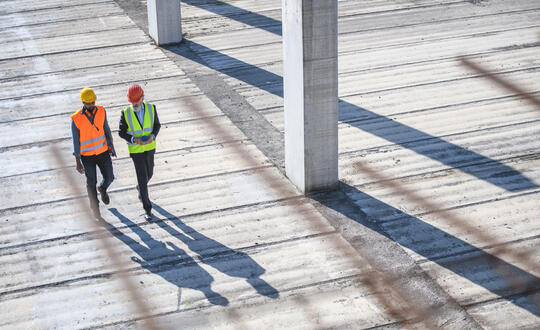
Competence is now a core pillar of the building safety regime, following the recent overhaul of the legal framework around building regulations.
A new role of building regulation Principal Designer has been created (not to be confused with the already existing CDM Principal Designer).
The new building regulation Principal Designers have a crucial role in construction projects - and they are subject to legal obligations around their competence and their part in designing and delivering buildings that are safe for the people who use them.
These changes came into force in late 2023, and will impact on how architects and designers are appointed. There are also new obligations placed on the clients who instruct them.
In our recent webinar, our speakers Simon Lewis, Partner at Womble Bond Dickinson, and Rob Charlton, CEO of Space Group, explored these changes and how the construction industry will be affected.
Understanding competence: the new legal landscape
Simon explained what the law says about competence - particularly for designers, the principal designer and clients. This included exploring:
- The Building Safety Act 2022 - which introduces dutyholders and competence - and where to find the dutyholder and competence changes in the secondary legislation
- Two aspects of competence - namely for individuals and for organisations
- The new dutyholder titles (client, principal designer, designer) which mirror the CDM Regulations titles but are completely different roles
- General dutyholder duties like planning, managing and monitoring work; cooperating with other dutyholders; being competent and ensuring those you appoint are competent too
- Specific dutyholder duties, with a particular focus on those for clients, designers and principal designers, and
- The competency requirements tied in to these duties, where everyone carrying out design or building work must be competent.
He also highlighted key standards and guidance available on dutyholders and competence, such as the BSI Flex, PASs, and industry reports.
Feeling the impact: what it means for architects, designers and clients
Rob made some core reading recommendations for books and legislation, before moving onto:
- Myth-busting by looking at some common points of confusion and clarifying these – including the common misconception that the dutyholder and competence regime only applies to higher risk buildings
- How changes in the industry over time had pushed design risk and responsibility down the chain, but this is now being rectified with the new regime changes
- The role of the Principal Designer from an architect's perspective
- Whether the new regime changes are really changes, or whether they are things that the industry should have been doing all along, and
- From a practical perspective, how his organisation intends to demonstrate competence, and key points to consider around fire protection, cladding, steel work connections, and changed and approved alternatives.
Questions and answers
Rob and Simon received a large number of questions before and during the event, and answered as many as they could including around whether it is possible to perform both a CDM and Building Regulation dutyholder role, retrospective claims under the Building Safety Act, architect obligations particularly around small practices and low risk buildings, the relevance of height restrictions or classifications, future RIBA publications, and accountable persons and principal accountable persons risks.
After the event, Simon said:
"The questions we received highlighted not only the issues that are of concern to many in relation to dutyholders and competence, but also that there is still a need for understanding of the wider aspects of the Building Safety Act and their effects on the construction sector across the board. It was great working with Rob again on this important area."
Rob added:
“The Building Safety Act represents a seismic shift in construction regulation following the sobering lessons of the Grenfell tragedy. The new dutyholder regime introduces much-needed accountability measures to prevent future disasters. The strong turnout at the webinar underscores industry-wide commitment to safer practices.”
To find out more, including points the speakers made that are not covered in the summary above, you can watch the full recording of the webinar by contacting [email protected].
For more on building safety, visit Womble Bond Dickinson's Building Safety Hub.
This article is for general information only and reflects the position at the date of publication. It does not constitute legal advice.





